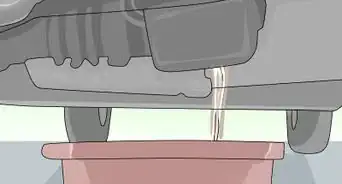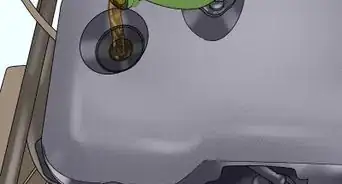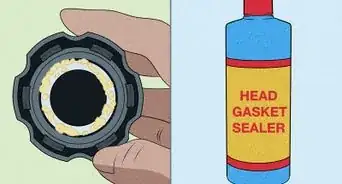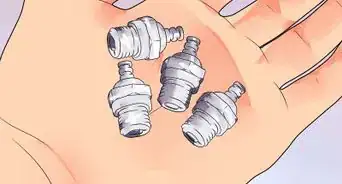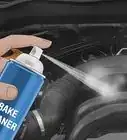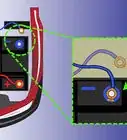This article was co-authored by wikiHow Staff. Our trained team of editors and researchers validate articles for accuracy and comprehensiveness. wikiHow's Content Management Team carefully monitors the work from our editorial staff to ensure that each article is backed by trusted research and meets our high quality standards.
This article has been viewed 201,457 times.
Learn more...
The cylinder head or heads make up a significant portion of your vehicle’s engine and plays an integral role in the internal combustion process. The cylinder head serves to control the intake of air and fuel as well as the expulsion of exhaust gasses. While cylinder heads are made up of numerous small components, cleaning a head is a fairly simple task. Just be sure it is completely disassembled and be careful not to damage the surface of the cylinder head during the cleaning process.
Steps
Preparing to Clean Your Cylinder Heads
-
1Gather the necessary equipment. Before getting started, you’ll need to gather the tools and equipment necessary to properly clean your cylinder heads. Much of what you’ll need can be found around the house, though you will also need to use a chemical parts or brake cleaner that can be purchased from your local auto parts store. You will also need access to warm water to soak the heads. Gather the following supplies before getting started:[1]
- Brake or parts cleaner
- Canned air or access to an air compressor
- Two large tubs or buckets
- Paper towels or rags
- Plastic scraper
-
2Ensure the head is completely disassembled. When fully assembled, cylinder heads contain numerous small parts that need to be removed before the cleaning process can begin. Most cylinder heads contain one or two camshafts, intake and exhaust valves with supporting hardware, and likely some ignition components such as spark plugs or ignition coils. All of these parts must be removed and stored safely while cleaning the cylinder head.[2]
- Use care when removing the valve cover on the top of the cylinder head to prevent it from warping. Loosen all of the bolts first, then proceed to unscrew them the rest of the way.
- Be careful not to lose any of the small pieces you removed.
- Some components of the cylinder head may need to be pressed out of the head using a machine press. If you don’t have access to one, you may need to enlist the help of a machine shop.
Advertisement -
3Put on the appropriate safety gear. The process of cleaning your cylinder heads includes the use of chemical cleaning agents that are a serious hazard to your eyes and may irritate your skin due to prolonged contact. In order to protect yourself, make sure to wear appropriate safety equipment at all times while cleaning your cylinder heads.[3]
- Eye protection such as safety glasses or goggles should be worn at all times when working with chemical cleaning agents.
- Chemical resistant gloves will protect your hands from being irritated by the brake or parts cleaner. If you use a non-spray parts cleaner that you fill the tub with, you may want to use gloves that extend to your elbow if possible.
-
4Determine what kind of material the heads are made out of. Most cylinder heads are made of either iron or an aluminum alloy. Each material has its advantages and disadvantages in terms of the performance and lifetime of your vehicle, but more importantly, aluminum is a softer metal and may be more prone to damage in the cleaning process. To determine what kind of metal your cylinder heads are made out of, check in the service manual for your vehicle or use the following factors to help you decide:
- Aluminum heads are much lighter than iron ones, both in weight and in color. Light grey heads are likely made of aluminum while darker colors may indicate iron.
- Iron is prone to rusting, while aluminum is not. If there are signs of surface rust on the heads, they are made of iron.
- A magnet will not stick to an aluminum cylinder head, but it will stick to an iron one.
Cleaning Cylinder Heads
-
1Use a plastic scraper to remove head gasket material. There is a good chance that there will still be some head gasket material remaining on your cylinder head. The head gasket creates a seal between the head and engine block (also sometimes referred to as the “top” end and “bottom” ends). Scrape off any remnants of the gasket using a plastic scraper. Be extremely careful not to scratch or damage the “mating surface” of the cylinder head where the gasket material can be found. Any scratch or damage can cause leaks that will lead to gasket failure once the engine is assembled again.[4]
- Do not use a metal scraper or any tools that could feasibly damage the mating surface of the cylinder head.
- Make sure to get all of the previous gasket material off of the head to allow for a proper seal when reinstalling.
-
2Place the cylinder head in the tub. With the gasket material gone, place the cylinder head in the first tub. If you are using liquid parts cleaner, pour the parts cleaner into the tub with the cylinder head so you can use it as you clean. If you are using a spray cleaner, you will not need to fill the tub.[5]
- Be careful when moving the cylinder head around. There are studs and vacuum line nozzles that will likely be sticking out your cylinder head that can be damaged if banged against walls or tables.
- Depending on the situation, you may need help moving the cylinder heads into and out of the tubs, as they can be rather heavy.
-
3Use parts cleaner and a rag to begin scrubbing the head. Use a rag and the cleaning agent of your choice to scrub every portion of the cylinder head that you can access. Pour or spray cleaner into the areas of the cylinder head that you are unable to reach. The cleaning agent will break up most carbon deposits and burnt oil, but you may need to scrub a bit in some areas.[6]
- Do not use a steel tooth brush or anything else that could damage the mating surfaces of the cylinder head when scrubbing.
- Take your time to ensure you clean every nook and cranny of the cylinder head.
-
4Fill the second tub with warm water. After you scrub your cylinder heads, fill the second tub up with warm water. Make sure the tub is tall enough to allow the cylinder head to be completely submerged in water, then fill it with enough water to completely cover the head. You may want to do the following step outdoors or in a room with a drain.[7]
- Make sure the tub is large enough to allow the cylinder head to be completely submerged.
- Use warm to hot water when filling the tub.
-
5Submerge the cylinder head in the water. Place the cylinder head in the water filled tub gently. The water will make its way through the areas of the cylinder head you were unable to access with your rag as well as helping to remove the cleaning agent you used in the previous step. Aluminum heads can be damaged by prolonged exposure to caustic cleaners so rinsing them off is imperative.[8]
- Allow the head to sit in the water for a few minutes.
- If the head isn’t completely submerged, add warm water until it is.
-
6Remove the head and use a rag to wipe it down. After waiting a few minutes, carefully lift the head back out of the tub of water and place it on a stable counter. Use a clean rag to wipe the cylinder head down and remove as much water from it as possible. Make sure to wipe out any standing water that may collect in the nooks and crannies of the head.[9]
- You will not be able to completely dry the cylinder head with a rag, but removing the majority of the water will help it to dry faster.
- Do not reuse the rag with a cleaning agent on it. Make sure it is a new, clean rag.
-
7Use a spray washer to clean the head. If you have access to a spray washer, which is a specific type of equipment designed to clean automotive parts, you can do a more effective job of cleaning the external and exposed internal areas of the cylinder head. Like cleaning it by hand, spray washers do a poor job of cleaning the internal surfaces that are hard to reach, but can dramatically reduce the labor required to clean the rest of the cylinder head.
- Spray washers are common in many professional garages and machine shops.
- Smaller spray washers can be purchased at auto-parts stores, though the cost may be prohibitive if you do not intend to clean other parts.
-
8Have the cylinder head “hot tanked.” Hot tanks are another type of specialized equipment used to thoroughly clean automotive parts. These tanks are filled with caustic cleaning agents that can reach all internal and external surfaces in the cylinder head. These tanks require significantly less labor than other cleaning options, as all you need to do is place the part in the tank and turn it on.
- Hot tanks are usually found in professional machine shops.
- You may opt to have your cylinder heads hot tanked after cleaning them yourself to ensure your heads are as clean as possible.
Drying and Storing Cylinder Heads
-
1Use compressed air to blow water out of hard to reach places. After you’ve dried the cylinder head’s external surfaces with a rag, use a can of compressed air or an air compressor to spray out all of the narrow tunnels and openings in the cylinder head. This will dry the head as well as removing any dust or other debris that may have fallen into the head during the cleaning process.[10]
- Spray air into every opening you can find in the cylinder head to ensure there is no remaining moisture or debris anywhere in the head.
- Make certain that there is no debris of any kind in the cylinder head. Even small amounts of debris can seriously damage the cylinder head once installed.
-
2Allow the head to dry completely. Leave the cylinder head on a counter to dry completely. Place paper towels over the top of the head to ensure dust does not fall into and settle in the newly clean and debris free head.[11]
- Do not store a head while wet. Iron heads, in particular, will oxidize and rust if stored wet.
-
3Inspect the head for defects or damage. Before re-assembling or storing your clean cylinder head, inspect it for any damage that may have resulted from the cleaning process or that may have occurred previously. Any cracks in the head will compromise its ability to function and blemishes, scuffs or scratches on the mating surface (the bottom of the cylinder head) will cause head gasket failure. If you notice any such damage, you may be able to have the cylinder head repaired at a machine shop, but you likely will need to purchase a new head.
- If you notice the cylinder head is still dirty in some places during your inspection, begin the cleaning process again.
- Remember that it’s better to be safe than sorry. Reassembly and installation of a cylinder head will require a significant investment of time. If you are concerned that the head is damaged, have it looked at by a local machine shop.
-
4Oil and bag the head for storage. If you intend to store your cylinder head for a time before re-assembly, you will need to take preventative action to protect it from debris and oxidization while stored. Spray the head lightly with WD40 before enclosing it in a heavy duty plastic bag.
- Seal the plastic bag by tying it off or stapling it shut to make sure dirt can’t fall into by accident.
- Make sure you store the cylinder head in a safe place where it won’t be damaged.
Community Q&A
-
QuestionWill it hurt to soak the heads for cleaning while the valves and springs are still attached?
 Community AnswerI would imagine this could damage the valve seals, but the springs, seats, retainers, valves, and guides should all be fine.
Community AnswerI would imagine this could damage the valve seals, but the springs, seats, retainers, valves, and guides should all be fine. -
QuestionWhen I was changing spark plugs on my car, some dirt fell into the combustion chamber. How do I clean it out?
 John822Community AnswerYou could remove the cylinder head to do this, but if it was only a little bit of dirt, then it will probably be fine. In the future, use compressed air and clean all the dirt away from the spark plugs before you remove them.
John822Community AnswerYou could remove the cylinder head to do this, but if it was only a little bit of dirt, then it will probably be fine. In the future, use compressed air and clean all the dirt away from the spark plugs before you remove them. -
QuestionHow do I take the heads off?
 John822Community AnswerTo take the heads off, you need to remove any parts that are in the way and remove the bolts. Be sure to loosen the bolts in a specific order (which is specific to your engine), and don't loosen them more than a quarter turn at once so you don't warp the cylinder head.
John822Community AnswerTo take the heads off, you need to remove any parts that are in the way and remove the bolts. Be sure to loosen the bolts in a specific order (which is specific to your engine), and don't loosen them more than a quarter turn at once so you don't warp the cylinder head.
References
- ↑ https://www.yourmechanic.com/article/how-to-clean-cylinder-heads-by-spencer-clayton
- ↑ http://www.aa1car.com/library/cylinder_head_components.htm
- ↑ https://www.yourmechanic.com/article/how-to-clean-cylinder-heads-by-spencer-clayton
- ↑ https://www.yourmechanic.com/article/how-to-clean-cylinder-heads-by-spencer-clayton
- ↑ https://www.yourmechanic.com/article/how-to-clean-cylinder-heads-by-spencer-clayton
- ↑ https://www.yourmechanic.com/article/how-to-clean-cylinder-heads-by-spencer-clayton
- ↑ https://www.yourmechanic.com/article/how-to-clean-cylinder-heads-by-spencer-clayton
- ↑ https://www.yourmechanic.com/article/how-to-clean-cylinder-heads-by-spencer-clayton
- ↑ https://www.yourmechanic.com/article/how-to-clean-cylinder-heads-by-spencer-clayton
About This Article
To clean the cylinder head on your car's engine, start by removing any small parts, like the camshafts and intake valves, which cannot be cleaned along with the cylinder head. Next, scrape off any head gasket material with a plastic scraper. Then, place the head in a tub with a liquid parts cleaner and scrub it with a rag. After that, submerge the head in a second tub filled with warm water and allow it to sit for a few minutes. Finally, remove the head and dry it with a clean rag, then use a can of compressed air to blow any water from the hard to reach places. For more tips, like how to clean your cylinder head with a spray washer, read on!
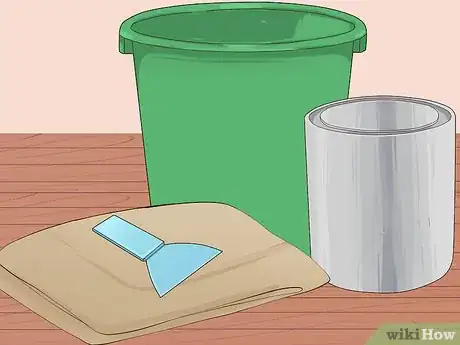

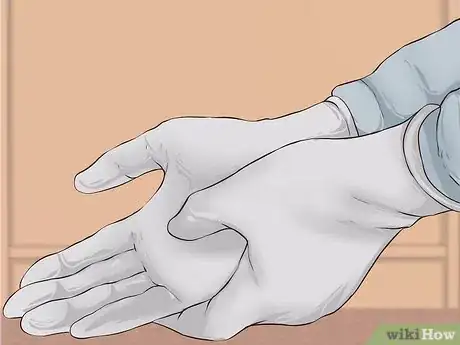
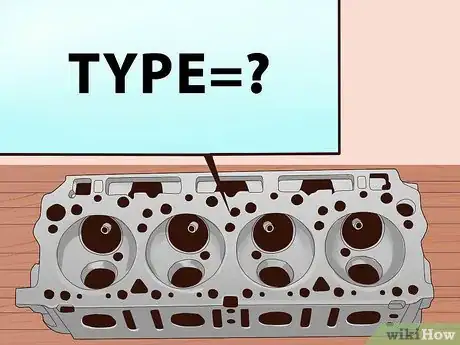
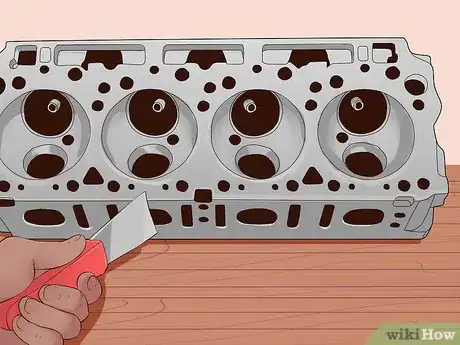
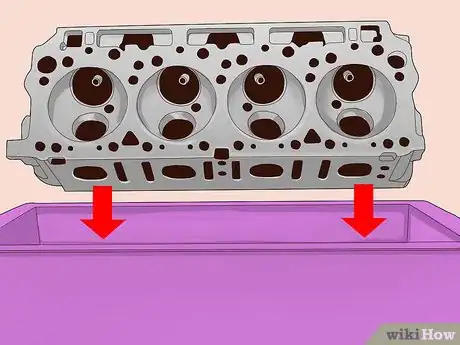
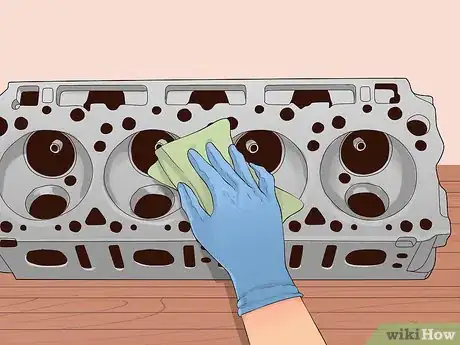
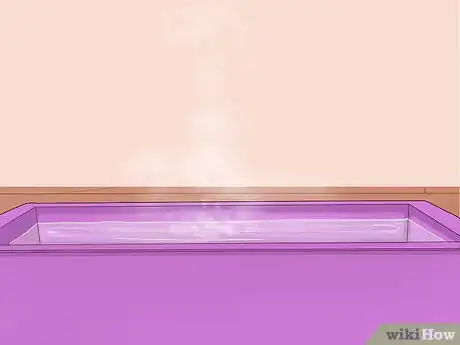


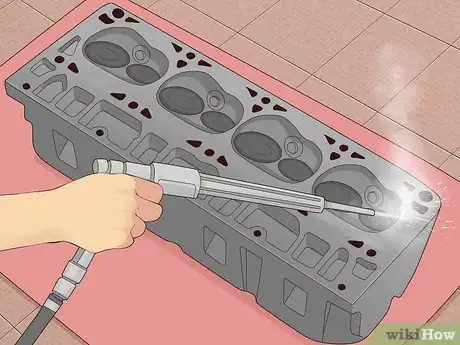
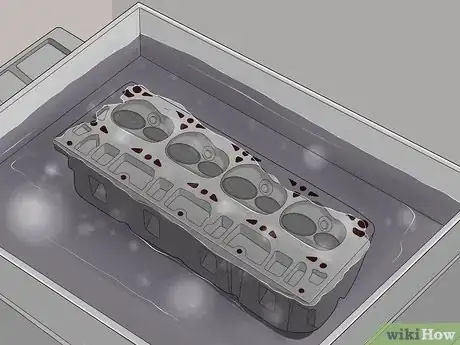
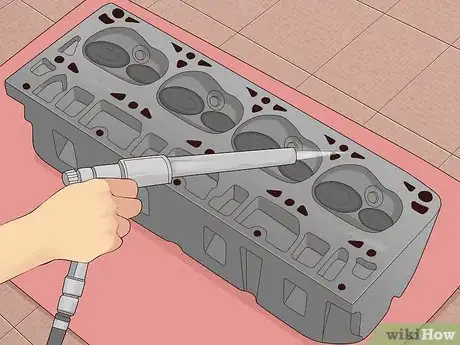
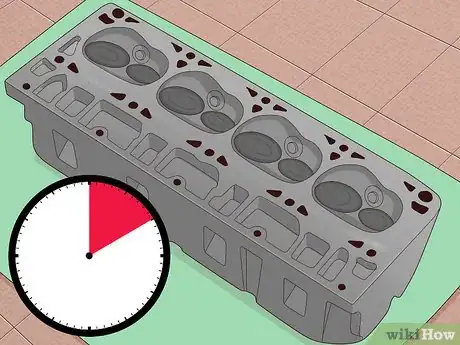
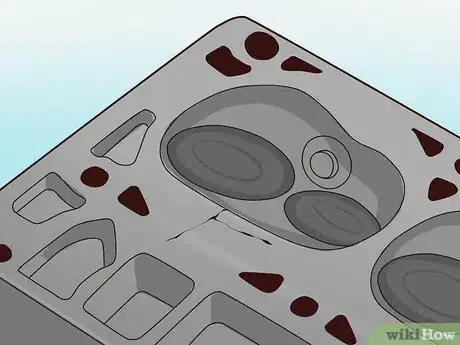

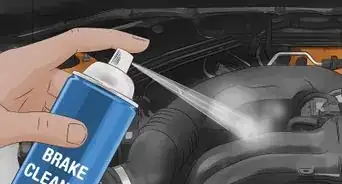




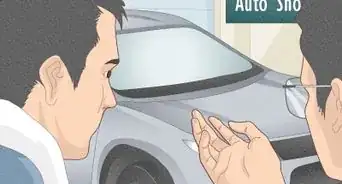

-Beetle-Step-5-Version-3.webp)

